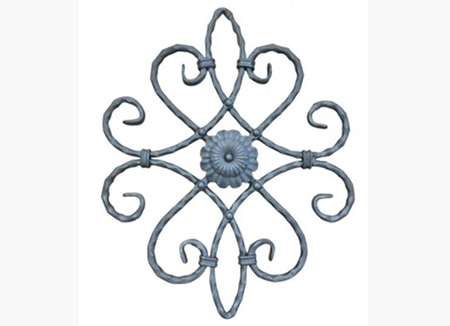What is ornamental iron made of?
Views: 694 Update date: Aug 01,2023
Have you ever strolled through a beautiful garden, admiring the elegant fences and gates that seem to whisper tales of timeless charm? Chances are, you were appreciating the craftsmanship of ornamental iron. Ornamental iron has adorned buildings and landscapes for centuries, captivating hearts with its intricate designs and durability.
Ornamental iron, often referred to as wrought iron, is a unique blend of strength and beauty. Unlike its name suggests, wrought iron is not "wrought" or shaped by modern machinery. Instead, it is a product of traditional blacksmithing, where skilled artisans forge it by hand. This craftsmanship gives each piece its distinctive character and ensures that no two ornamental iron creations are ever exactly alike.
1. Iron (Fe): At the heart of ornamental iron lies iron itself. This elemental metal is the foundation of strength and durability that makes ornamental iron an enduring choice for architectural embellishments. Its malleability allows artisans to sculpt intricate patterns and artistic motifs, creating captivating designs.
2. Slag: During the smelting process, impurities in the iron ore form a glass-like substance known as slag. Surprisingly, this byproduct is a critical element that enhances the visual appeal of ornamental iron. The swirling patterns of slag give the material its signature rustic charm, adding depth and texture to every piece.
3. Carbon (C): To achieve the desired properties, a small amount of carbon is introduced into the iron. This incorporation alters the crystalline structure of the metal, resulting in improved hardness and strength. The right balance of carbon infuses the ornamental iron with the tenacity to withstand the test of time while maintaining its grace.

Preserving Elegance Through Galvanization
While ornamental iron boasts exceptional resistance to the elements, it is not invulnerable to corrosion. To preserve its elegance for generations to come, galvanization comes to the rescue. Galvanization is a process where a protective layer of zinc is applied to the iron, shielding it from rust and ensuring it remains magnificent through rain or shine.
From Garden Gates to Grand Landmarks
Ornamental iron's versatility is unparalleled. It graces the humblest garden gates with a touch of sophistication and leaves an indelible mark on grand landmarks worldwide. Whether it's the intricate railings of historic buildings or the elaborate fences of sprawling estates, ornamental iron weaves an enchanting story that stands the test of time.
Prev News: What are examples of ornamental iron work?
Next News: Is ornamental iron the same as wrought iron?
